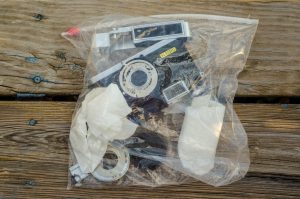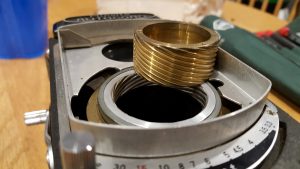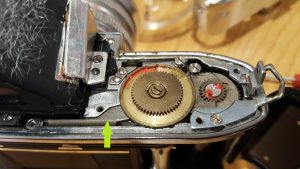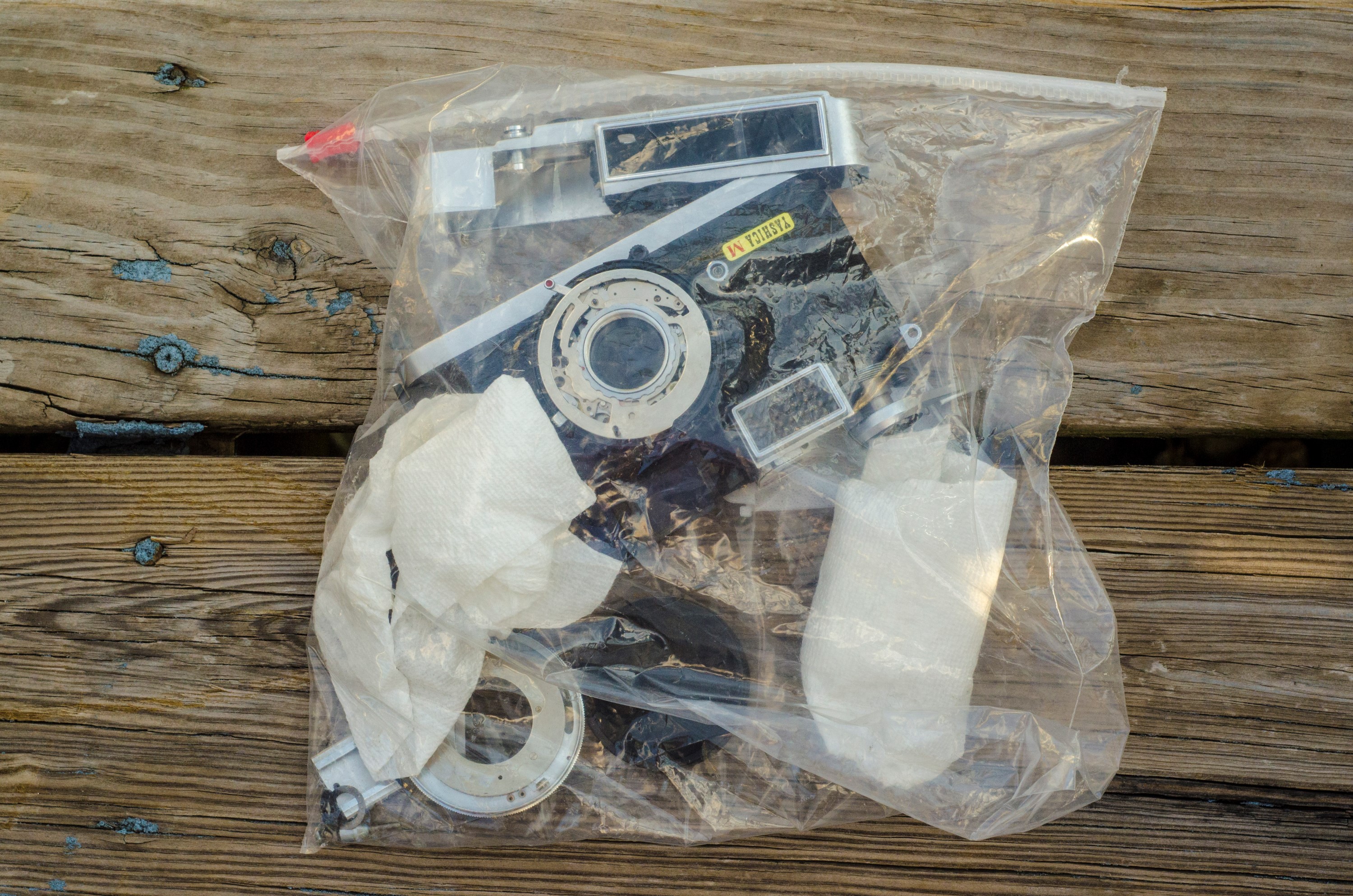Each time I pick up a classic camera, I am awestruck at the craftsmanship and build quality that these old devices have. Cameras from the early to middle of the 20th century were created by craftsmen (and women) who paid close attention to the various gears, levers, dials, and switches inside and out of each camera. Whether you’re talking about a Bakelite Kodak Brownie, or a Rolleiflex, there was care put into every part.

It never ceases to amaze me that these devices which are older than I am and sometimes more than double older than me, still work as good as the day they were made, and if you consider that modern film we can get today is sharper, more colorful, and more flexible than films of the past, you can say that old cameras actually work better than they did when they where new. What other type of product can honestly say that after half a century, gets better with age?
Despite all of the care and effort put into a camera when it was built, each camera takes a unique path from the moment it rolled off the assembly line to the moment a collector such as myself acquires it. Some were cared for like family heirlooms, always kept in their case, handled with the same care you would an infant, dusted and wiped clean with regularity, and frequently checked by a repair person, etc. But others went through war (literally), got wet, banged around, dropped, exposed to heat and moisture, or had any other number of things happen to them which affect their functionality.

Regardless of who made a camera or when, or how much it cost you today, all cameras suffer the ravages of time equally. Father time is just as hard on that Leica M3 as it is that Argus C3 and just because you paid more for it, doesn’t mean it can’t still be broken.
The good news is most cameras owned by collectors today work fine, and when some have issues, they’re usually minor and easily corrected. I talk about bringing cameras back to a usable state in my article “Breathing New Life Into Old Cameras” where I say that a camera might not need a full service in order to be used.
It’s hard to believe that there was once a time when the original owners of these cameras had to think about their cameras not working. For devices that seem to consistently be impervious to the ravages of time, that an article published in the February 1968 issue of Modern Photography was even necessary at all.
But it was. No camera was created perfectly, and for a variety of reasons, many of which are discussed in the following article, cameras can break. Sometimes it was due to the choice of metal when a camera was designed (too much plastic, soft brass metal, etc), sometimes it’s due to the use or abuse of the camera by it’s user (abuse, drops), and sometimes it’s the environment (sand, moisture).

Reading through this article, I found it fun to try and guess which cameras each of the broken parts came from. Modern Photography took care to not mention any specific model by name, likely so as not to spread concerns about the quality of each product. The very first page clearly shows the cocking rack from a Kodak Retina Reflex SLR that can commonly strip, the front plate of a Pentax S-series (like the Sv), and what looks like a Barnack Leica (or one of the many cameras inspired by it) with the top plate removed. How many more of the parts shown in this article can you name?
This isn’t intended to be a repair guide, but more a lesson on what could go wrong and tips on how to prevent it. Other than common sense things like don’t get your camera wet, don’t drop it, and don’t get sand in it, there are a lot of great tips like not trying to force an extra exposure at the end of a roll by pushing hard on the wind lever, mounting a tripod to your camera securely but without over-tightening it, and improperly supporting a camera by it’s lens mount instead of by the lens itself (in the case of heavy telephoto lenses).
There are even a few more which I never considered like after shooting outdoors in extreme cold, putting it inside of a plastic bag before going back inside to allow condensation to form on the outside of the bag, instead of on the camera itself. Another is that you should never check your camera with your luggage when flying in an airplane as the unpressurized cargo holds can force lubrication inside of the camera into other areas where it doesn’t belong.
Even if you have no interest in repairing a camera, I still think this is an interesting article just to see how the concept of camera repair and maintenance was approached 50 years ago. It is likely that because the original owners heeded these warnings and took such good care of their cameras, that we have so many well preserved cameras that we all can use and enjoy today!
In celebration of the 10th Keppler’s Vault article, I have a bonus article that was found in the November 1968 issue of Popular Photography. Although the Keppler’s Vault series was created to highlight articles published in Modern Photography, I have access to some limited back issues of Popular Photography as well, and since this article is a nice segue to why cameras break, I thought I would include it as well. (Plus Herbert Keppler would eventually work for Popular Photography too.)
This article shares many of the same tips as the above article on how to keep a camera in tip top shape and the things to look for when buying a used camera. I found two things interesting about this article, the first of which is that nearly everything in here applies to buying cameras today. Other than not having the option to buy these classic cameras new anymore, the tips in this article apply just as much in 2018 as they did in 1968. The other interesting thing is the reference to using a television screen or record player as quick way to test shutter speeds, or go to a gas station and use their air hose. With rare exception, each of these technologies are not easily found today. Analog TVs are all but extinct, very few people still use record players, and all gas stations (at least those in my area) do not have free air hoses anymore!
All scans used with permission by Marc Bergman, 2018.













The “record player” is on a big comeback because vinyl is back! Old records or repressed old records are quite easily to get today. Tube amps are back – but pricey. Tape-to-Tape players/recorders are back. EBay has tons of good 33rpm LPs as well as new LPs. GOOD sounding music is back!